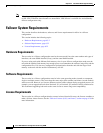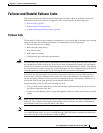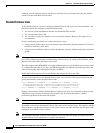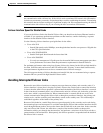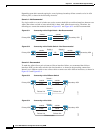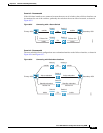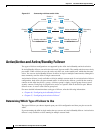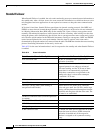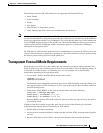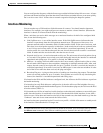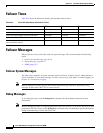
65-10
Cisco ASA 5500 Series Configuration Guide using ASDM
Chapter 65 Information About High Availability
Stateless (Regular) and Stateful Failover
Stateful Failover
When Stateful Failover is enabled, the active unit continually passes per-connection state information to
the standby unit. After a failover occurs, the same connection information is available at the new active
unit. Supported end-user applications are not required to reconnect to keep the same communication
session.
In Version 8.4 and later, Stateful Failover participates in dynamic routing protocols, like OSPF and
EIGRP, so routes that are learned through dynamic routing protocols on the active unit are maintained
in a Routing Information Base (RIB) table on the standby unit. Upon a failover event, packets travel
normally with minimal disruption to traffic because the Active secondary ASA initially has rules that
mirror the primary ASA. Immediately after failover, the re-convergence timer starts on the newly Active
unit. Then the epoch number for the RIB table increments. During re-convergence, OSPF and EIGRP
routes become updated with a new epoch number. Once the timer is expired, stale route entries
(determined by the epoch number) are removed from the table. The RIB then contains the newest routing
protocol forwarding information on the newly Active unit.
Table 65-2 list the state information that is and is not passed to the standby unit when Stateful Failover
is enabled.
Table 65-2 State Information
State Information Passed to Standby Unit State Information Not Passed to Standby Unit
NAT translation table The HTTP connection table (unless HTTP
replication is enabled).
TCP connection states The user authentication (uauth) table.
Inspected protocols are subject to advanced
TCP-state tracking, and the TCP state of these
connections is not automatically replicated.
While these connections are replicated to the
standby unit, there is a best-effort attempt to
re-establish a TCP state.
UDP connection states DHCP server address leases.
The ARP table State information for modules.
The Layer 2 bridge table (when running in
transparent firewall mode)
Stateful Failover for phone proxy. When the
active unit goes down, the call fails, media stops
flowing, and the phone should unregister from the
failed unit and reregister with the active unit. The
call must be re-established.
The HTTP connection states (if HTTP replication
is enabled)
—
The ISAKMP and IPsec SA table —
GTP PDP connection database —
SIP signalling sessions —
ICMP connection state By default, the ASA does not replicate the ICMP
connection state in failover. ICMP connection
replication is enabled only if the respective
interface is assigned to an asymmetric routing
group.



